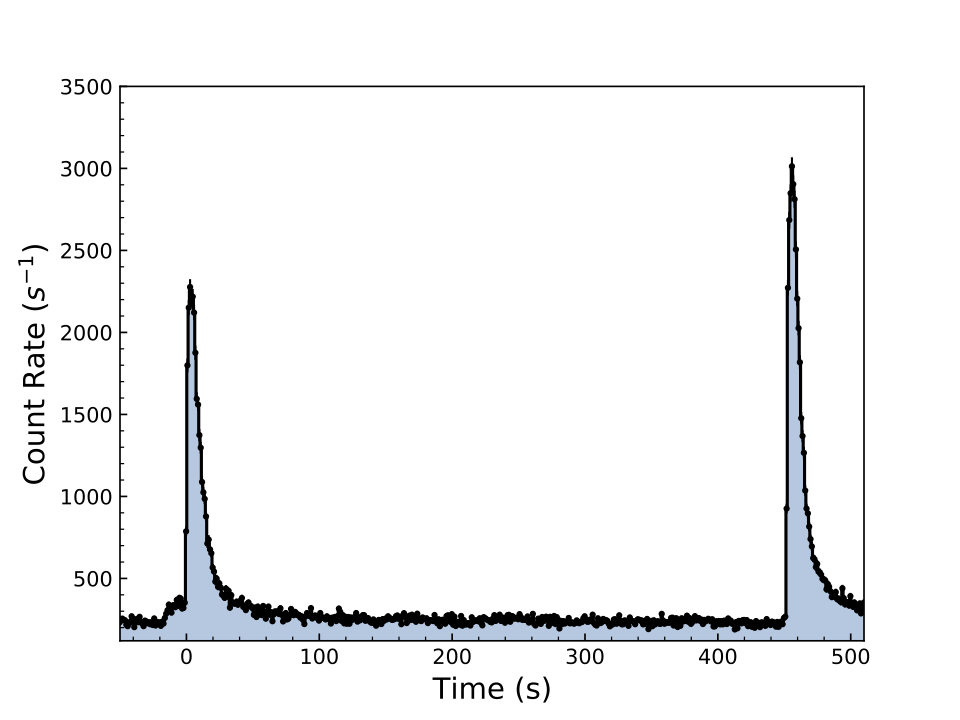NICER / ISS Science Nugget
for December 9, 2021
NICER Surveys the Explosive Behavior of Aquila X-1
The neutron star in the low-mass X-ray binary known as Aquila X-1 accretes matter from a companion star at an unsteady rate. Most of the time, low-level accretion is visible as the steady but relatively faint thermal X-ray glow of a hot accretion disk. Approximately once per year, however, the companion star ejects a large quantity of gas that feeds the disk and the neutron star in a weeks-long event visible as an order-of-magnitude brightening in a prolonged outburst. Such outbursts are routinely detected by the JAXA ISS payload MAXI, which triggers NICER observations. In addition to heightened emission from the accretion disk, the accumulation of accreted gas on the neutron star's surface triggers so-called Type I X-ray bursts, flashes of radiation released as the high-density fuel ignites in a thermonuclear explosion.
In observations spanning some half-dozen outbursts, NICER has detected a total of 22 of these explosive bursts (left figure), including two "short recurrence time" events in which a pair of bursts were seen in a single uninterrupted exposure (right figure), with separations less than 500 seconds. These burst pairs are especially important as a diagnostic of the rate at which fuel accumulates and is able to reach critical temperatures and densities for ignition. The collection of bursts also includes "photospheric radius expansion" (PRE) events, in which the explosion is sufficiently violent that its pressure lifts the neutron star's dense but thin atmosphere to high altitudes. All bursts, but especially PRE bursts, are found to have some impact on the accretion disk surrounding the neutron star, including an increase in the fraction of gas that is ionized, and an overall brightening that scales with the strength of the explosion -- some of this brightening is simply light from the explosion reprocessed (or "reflected") by the disk. These interactions provide a novel handle on the shape, makeup, and dynamics of accretion disks around neutron stars.
Results from NICER's survey of explosive bursts from Aql X-1, in a manuscript led by Dr. Tolga Güver of Istanbul University, have been accepted for peer-reviewed publication by the journal Monthly Notices of the Royal Astronomical Society (U.K.).


Figure: Left: Long-term lightcurves of Aql X-1 as observed by MAXI in the 2 - 20 keV photon energy band. The MAXI data are shown with black dots, and each panel captures one or more outbursts. The grey vertical dashed lines indicate NICER observation times; the red dashed lines show the times when a thermonuclear X-ray burst was detected by NICER. Right: Lightcurve in the 0.5-10 keV band of short-recurrence bursts 21 and 22. Time bins of 1 s are used, and pre-burst count rates are not subtracted.
<< Previous
Main Index
Next >>